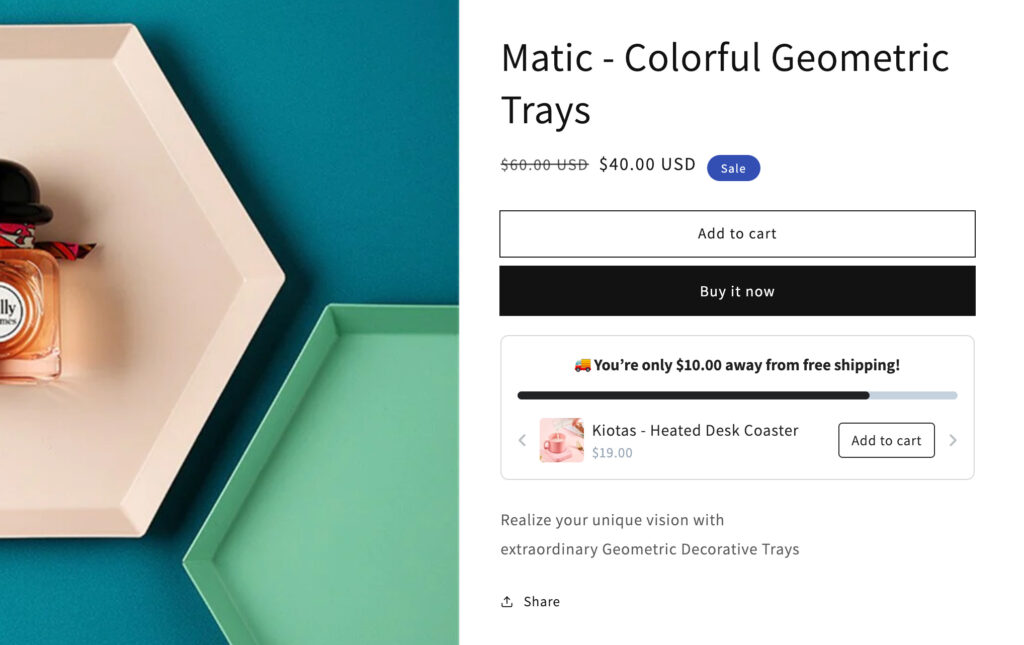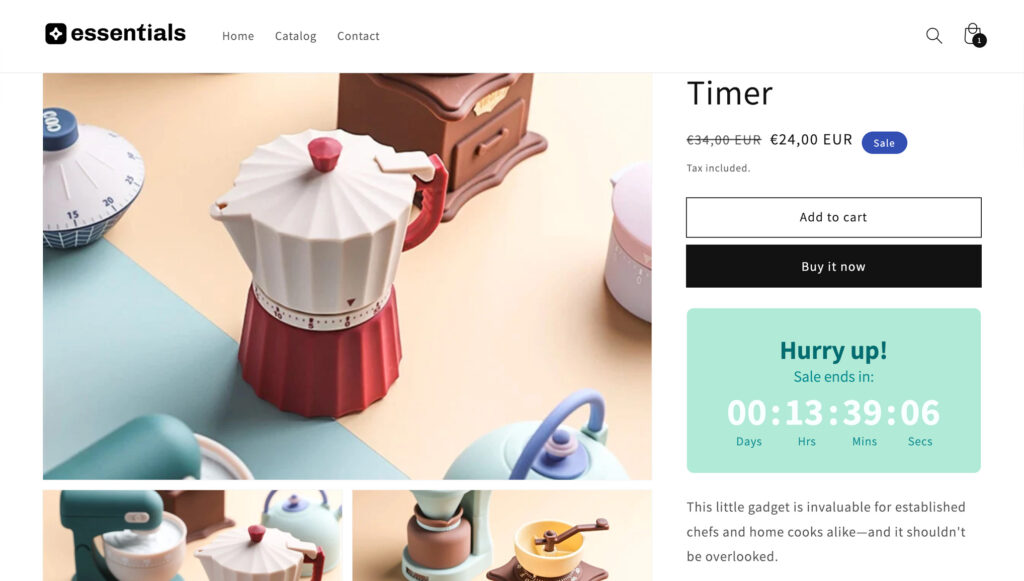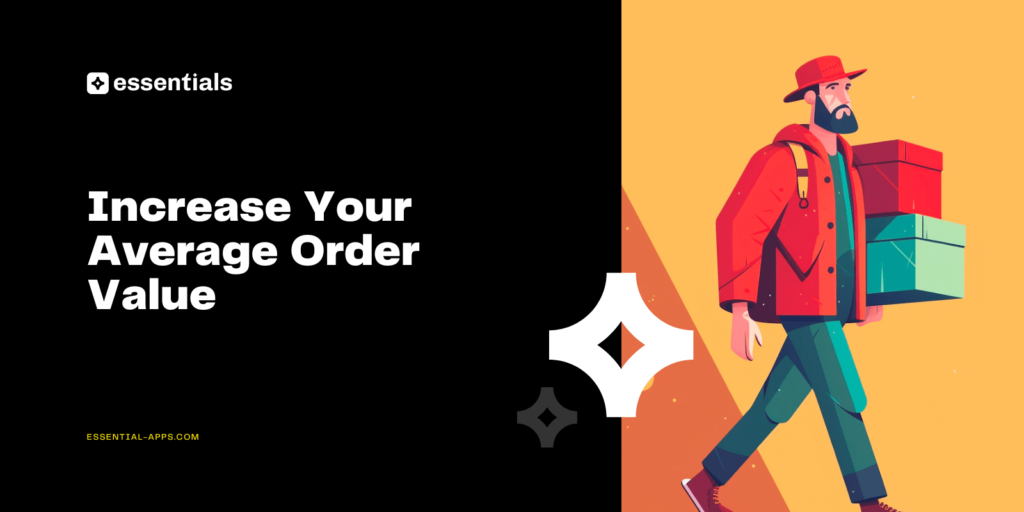All businesses want to increase their sales. No matter what they sell. But there is a difference between selling to a greater number of people and selling more to each customer. A well-thought-out marketing strategy and sales process can help switch customers’ behavior from awareness to buying. However, it’s also important to think about how to get more out of each customer.
Selling additional products or services to a customer can potentially double or triple your revenue. This is the ultimate goal, right? Average Order Value (AOV) is one great way to measure sales performance and customer value. Increasing AOV can help you redefine how you promote your products, gain insights into your customers’ behavior, and adjust pricing strategies.
Plus, unlike increasing website traffic, boosting AOV doesn’t require additional spending.
Let’s explore some proven effective techniques for increasing AOV and getting closer to achieving and exceeding your sales targets.
Table of Contents
Why AOV is important
Average Order Value (AOV) keeps track of how much customers spend on average on each order. Even though AOV doesn’t affect the overall profit or profit margins, it is still a highly important metric to keep track of.
AOV provides insight into customer patterns, trends, and spending habits, as well as your marketing and pricing strategies. For example, if your products are valued between $5 and $30 but your AOV is $15, it means your customers are buying multiple items, but cheaper ones. Knowing your AOV can help you adjust your campaigns and strategies according to your customers’ shopping behavior, making them more effective and profitable.
The higher the AOV, the more you can get out of each customer while also acquiring new ones. If AOV is low, paying attention to insights can reveal missed opportunities to influence customers to add more items to the cart or select a more premium version of a product.
Improving AOV requires thorough studying of customer behavior and pricing, which can be a lengthy process of back-and-forth testing to find the best solution, and require a lot of advanced tools, such as SuperAnnotate. However, there are some common tactics you can adapt to improve AOV, that have already proven to be successful for businesses of various sizes and markets.
Experience the pinnacle of ecommerce excellence with Shopify Plus Web Design Agency like Weberous. Their team of dedicated experts specializes in harnessing the full potential of Shopify Plus to propel businesses to new heights. From custom design to strategic optimization, Weberous offers tailored solutions to meet the unique needs of every client.
Effective Tactics to Increase Average Order Value
1. Offer Free Shipping
Offering free shipping is a simple yet effective way to increase AOV and gain an edge over competitors in the same industry. Research has consistently shown that customers prioritize free shipping as high shipping costs are one of the top reasons for shopping cart abandonment. Customers may intend to proceed to checkout, but they will drop out if they find the shipping cost unreasonable.
So, ecommerce businesses commonly offer free shipping if a certain requirement or condition is satisfied. For example, you can offer free shipping on orders over $30 and encourage customers to purchase more to qualify.

Display your deal prominently on your homepage to draw visitors’ attention to it. Additionally, notify customers when their orders are close to the free shipping threshold indicating the exact amount they have left to spend to motivate them to add more items to their cart.
The simplest way to utilize this tactic to increase your average order value is to use a free shipping bar. For example, Essential Free Shipping Bar app is designed specifically for Shopify stores.
With it, you can create a customizable free shipping bar that can be displayed prominently across your store. It also has an integrated upsell functionality, so you can add preferred upsell products that will immediately appear below the bar.

By leveraging this feature, you can effectively promote complementary products and encourage customers to add them to their cart, thereby increasing their AOV.
Pro tip:
Choosing the appropriate free shipping threshold is crucial for maximizing revenue per session. To determine the optimal threshold for a specific store and niche, we recommend conducting tests with various options.
2. Offer a discount for buying multiple items
Providing discounts may seem contradictory to the goal of increasing AOV since the aim is to generate more revenue per purchase. However controversial it may sound, discounts make customers feel like they’re losing money if they don’t take advantage of the offer. So they are more likely to add additional items to the cart. However, like with free shipping, to increase AOV consider providing discounts only under certain conditions. For example, a particular cart value.
There are generally two types of discounts – percentage-based discounts and value discounts.
Percentage-based discounts range from small like 5% or 10% off to larger discounts like 20% and 25% to drive sales to significant percentages of 50% and more to push old collections.
Value discounts, on the other hand, work more like credits and give customers a specific amount off their cart.
To maximize this tactic, you can use an app such as Kaching Bundle Quantity Breaks. Thanks to its adjustable product bundle discounts and user-friendly interface, it is a great tool for maximizing sales and increasing average order value. It offers customizable product bundle discounts, so you can create a more engaging shopping experience for your customers and motivate them to spend more.
You can create tiered pricing options for the various needs of your customers. For example, specify which products or collections are eligible for volume discounts and customize the discount making it a percentage, money discount, or a specific price off.
Pro tip:
Shopify offers a great tip for deciding between the two discount types: if the item is less than $100, go for a percentage discount. If it’s higher, opt for a value discount.
Overall, offering free shipping and discounts with specific requirements are proven tactics to increase your AOV. By implementing this strategy effectively, you can attract more customers and boost AOV.
3. Bundling and cross-selling
Selling items together in one bundle can be more profitable than selling each separately. To this day customers see bundles as a way to save. Even if the amount saved is small.
The easiest way to approach it – instead of selling three individual items, for example, for $25 each, offer a bundle deal for $60, which would make each item cost only $20.
To increase the average order value and sell more products, consider offering volume discount bundles on your product page.
Overall, offering customers additional items that complement their original purchase or product that they are considering, be it in a bundle or, for example, a “people also buy” type of section, is a highly effective strategy to increase AOV (we are looking at you, Amazon).
There is plenty of apps that can help you do just that and increase AOV. Check out this list of the best bundle apps for Shopify or best upsell apps for Shopify to pick the right one for your needs.
Pro tip:
The items for the bundle don’t necessarily need to be similar or from the same category. To maximize success, keep your bundles flexible. What does it mean?
Customers likely won’t buy a bundle if they see that only one or some of the items meet their needs. So give a broader selection of products and offer the option to swap out different items to create a more customizable bundle to suit various needs. This way, you can increase your chances for success with your bundling strategy.
4. Upsell with a subscription
Overall, offering your customers a subscription is an excellent chance for you to establish stronger connections with customers and create a steady stream of revenue in the long run. However, you can also use it as an added upsell to increase not only AOV, but also Lifetime Value (LTV).
LTV is a key indicator of the health of your brand, as it tracks your customers’ repeat orders over time and can help you to identify areas for improvement and implement strategies to increase customer retention and maximize revenue.
Instead of leaving your customers with their single order, offer them a monthly subscription to the same product at checkout. This can motivate them to sign up for the subscription and make a larger purchase. You can also throw in a discount on the subscription and make the offer even more irresistible.
A haircare brand Function of Beauty uses a subscription-based model to offer customers a convenient and customized solution for their haircare needs. After taking a personalized quiz, customers can choose – to either place a one-time order or… sign up for a subscription to receive hair products on a regular basis.

Of course, those who sign up for a subscription get a discount from the company as well.

Pro tip:
Upsell customers with a subscription offer not just at checkout, but immediately after they completed a purchase!
The post-purchase offer is presented at a powerful moment. By making a purchase, the customer has already placed their faith in you and is thrilled about their purchase. It is a good way to keep people interested and increase their loyalty. Since the customer has already finished the checkout, there’ll be no cart abandonment. Plus, the user experience is smooth. Customers don’t need to re-enter any shipping or payment information, so the process is as easy as it gets.
5. Tap into fear of missing out (FOMO) and scarcity
Despite having been exposed to this technique for decades (first, in retail, and now in the digital space, too), customers are still driven by the fear of missing out on a good deal. The psychological need to avoid being left out leads them to make purchases impulsively, without much thought.
Triggering FOMO by displaying attractive deals is a great way to encourage customers to make purchases, but how can you take it one step further and make sure customers act even quicker? That’s where a countdown timer comes in.

A countdown timer creates a sense of urgency – when customers see a limited-time offer with a countdown timer ticking away, they’re more likely to act before the opportunity disappears. With just one countdown timer, you can tap into this sense of urgency and increase sales.
Like the En Gold company did. They offered discounts up to 20% for Black Friday and saw a 40% increase in orders with just one countdown timer.
For Shopify users, Essential Countdown Timer is an ideal app to easily add customized countdown timers to product pages, cart pages, and checkout pages. The app offers several types of countdown timers, including fixed, recurring, and evergreen, and also provides performance analytics to track their impact.

6. Offer extended warranties
Customers are often hesitant especially when buying more expensive items. An extended product warranty is a great way to wipe out their doubts, persuade them, and boost sales. When you give them a warranty, customers feel more confident. They know that the product will last, which increases their trust in you and encourages them to proceed with the purchase.
Research shows that offering a warranty can even lead to customers adding more items to their cart. Over a third of them state they are more likely to buy more when they see that you’re offering a warranty.
Pro tip:
Display information about the warranty both on the product and checkout pages. This way you will give your customers a sense of security and show that you stand behind your products – that you’re confident in their quality and that you want your customers to feel good about their purchases.
Final thoughts
There are various strategies that businesses can employ to increase AOV. By implementing these proven tactics we’ve provided and consistently monitoring and adjusting them, you can achieve long-term success and growth. However, it’s important to continually evaluate and adapt these strategies based on customer feedback to stay competitive and meet evolving customer needs and preferences.


